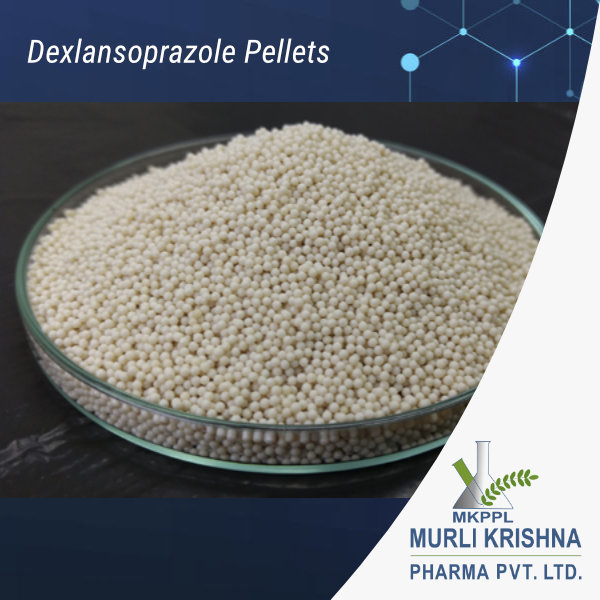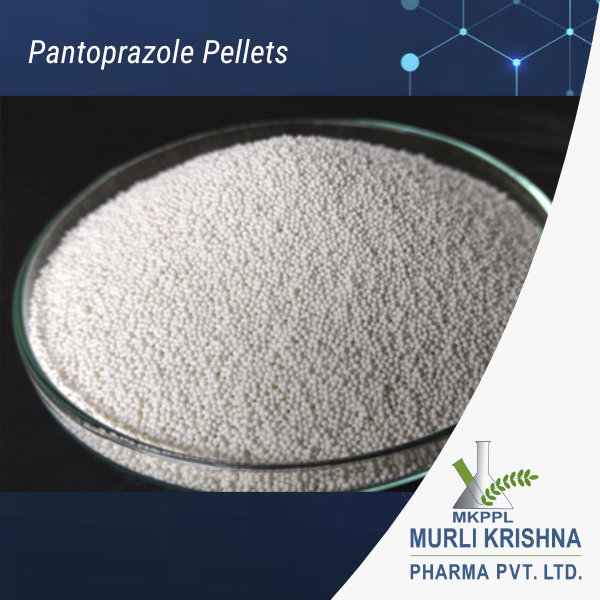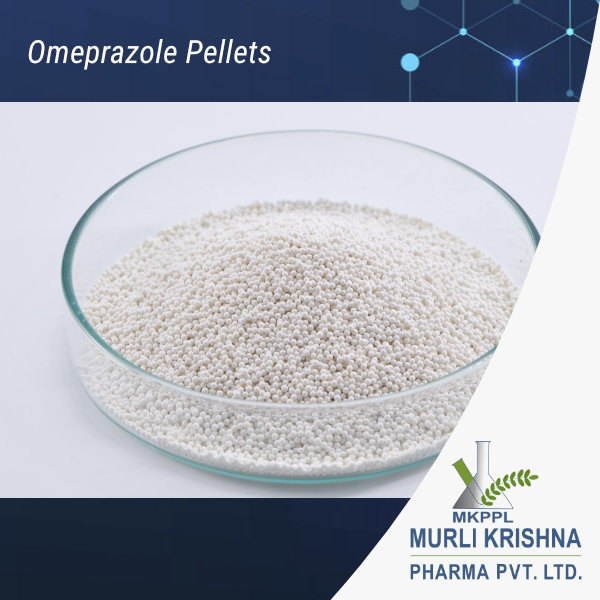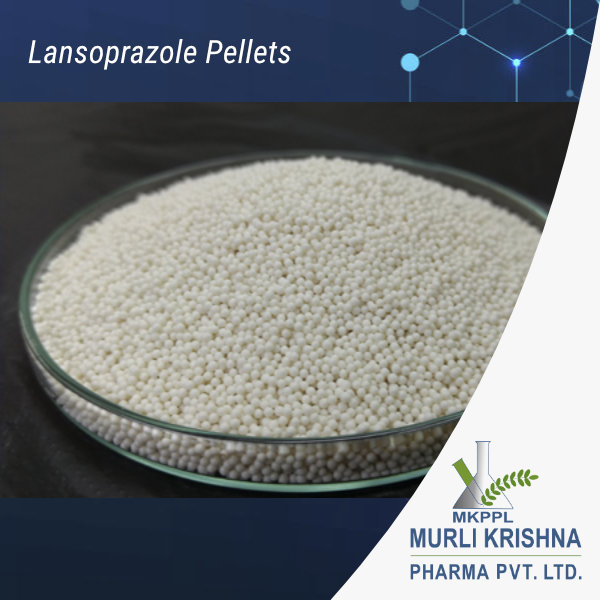Dexlansoprazole DDR Pellets
Dexlansoprazole DDR Pellets 17%, 20%, 22.5%, 23% – Suitable for Capsules (Dose: 30 mg, 60 mg)
The pharmaceutical form of dexlansoprazole is based on the unique technology of modified dual release. The active ingredient is released in two phases at different pH values and with a time interval. Consequently, the drug achieves two peak concentrations in the blood, and the total serum concentration of dexlansoprazole is three times higher.
- MKPPL has developed Dexlansoprazole pellets by aqueous technology to match the dissolution profile of Dexlansoprazole Pellets with Innovator.
- The product developed is comparable with innovator with respect to dissolution profile of the marketed product.
- We offer development services if different formulations/dosages/strengths are required
- Offer complete technical package for registrations in all regulated/semi regulated markets
- Products protected by ongoing Patents are not offered by MKPPL.
The mechanism of action of PPIs is based on inhibiting the activity of the enzyme hydrogen/potassium adenosine triphosphatase (H/K ATPase) called the proton pump and found in parietal cells of the gastric mucosa. H/K ATPase is involved in the secretion of hydrochloric acid, hydrolyzing ATP and exchanging H+ ions from the cytoplasm for K+ ions in the secretory canaliculus, which results in HCl secretion into the gastric lumen. Proton pump inhibitors are benzimidazole compounds and occur in the form of pro-drugs. All proton pump inhibitors demonstrate a high degree of activation in the acidic environment. After passing through the liver and reaching the gastric parietal cells activated by a meal, PPIs undergo protonation in the acidic pH environment, followed by conversion to sulphenamide which represents the active form of the drug. Sulphenamide inhibits the activity of the proton pump and hence the transport of hydrogen ions into the gastric lumen via covalent binding to the SH groups of the cysteine residues of H/K ATPase.
All PPIs work on forming metabolite post their accumulation in acid canaliculi post absorption. The metabolites form co valent bonds with cysteine and lysine amino groups. Lansoprazole works on inhibition of these amino acids in the 813 and 321 amino groups of the final enzyme process.
The PPIs are inactive in their native form and are rapidly metabolized by the liver. Since PPI is an acid-activated prodrug, it is important to keep the PPI plasma level high until the gastric acid secretes. Maintaining high plasma level of the drug is significantly affected by the character of the metabolism.
Due to its unique formula, dexlansoprazole can be referred to as a new-generation proton pump inhibitor. A modification of the chemical structure and pharmaceutical form of the drug has improved its bioavailability and metabolism, and the efficiency of inhibiting the proton pump function in the parietal cells of the gastric mucosa. The pharmaceutical form of dexlansoprazole is based on the unique technology of modified dual release. The active ingredient is released in two phases at different pH values and with a time interval. Consequently, the drug achieves two peak concentrations in the blood, and the total serum concentration of dexlansoprazole is three times higher than that of the left-handed enantiomer. Also, dexlansoprazole has a lower elimination rate than S-lansoprazole and persists longer in the serum. It inhibits acid secretion for a longer period, and its AUC (area under the curve) values are 3–5 times higher than those determined for the racemic mixture or the left-handed isomer. Consequently, dexlansoprazole modified release ensures the longest period of drug retention in the circulation and the most powerful inhibitory effect on the proton pump of all available proton pump inhibitors.
The duodenum (first part of the small intestine) does not have a mucous lining like the stomach. Hence it cannot tolerate the low pH introduced by the chyme. In order to neutralise the pH, the liver secretes bile and pancreas secrete bicarbonate into the duodenum and bring the pH up to a range of 5 to 6. The jejunum, situated right after the duodenum, is about 10 feet in length and has a pH between 7 and 8. The jejunum is followed by a 10 feet long ileum, again with a pH in the range of 7 and 8.
Unlike the animal model, the measurement of inhibition of acid output in human is not easy, so measuring intragastric pH is used to present the inhibition due to drug activity. Actually, control of the intragastric pH is very important in healing acid-related diseases and eradicating Helicobacter pylori. The duration time of intragastric pH over 3 is crucial for healing duodenal ulcers. In order to get successful treatment of GERD, percent time of the intragastric pH > 4 should be high, as is true for eradicating H. pylori. Therefore, duration time of intragastric pH over 3 or 4 and mean (or median) intragastric pH become powerful tools in evaluating the drug’s efficacy. Mean intragastric pH was shown to have some linearity with AUC, however, the degree of acid suppression shown by intragastric pH profile is the best in vivo parameter with which to compare the potency of PPIs.
The plasma level of the dexlansoprazole is not linear to the inhibitory activity. The gastric antisecretory effect is related to the total dose and AUC, whereas the peak level or the shape of the curve is of minor importance. This enables AUC to correlate with the activity. Linear relationship between the inhibitory activity and AUC is not shown at higher dosage of the drug. Though the relationship between AUC and the inhibition is not linear at higher dosage of the drug due to the short half-life of the drug and the limited exposure of the enzyme to the drug, at least AUC showed the efficacy of the drug with good reliability and hence AUC. These are all the role players in antisecretory effect of Dexlansoprazole.
Additional Information
| Percentage | 17%, 20%, 22.5%, 23% |
|---|---|
| Release Type | Dual Delayed Release |
| Documentation Available: | Technical Package |
| Forms of PFI | Pellets/Micro pellets (for capsules) |
| Target Formulations | Capsules |





